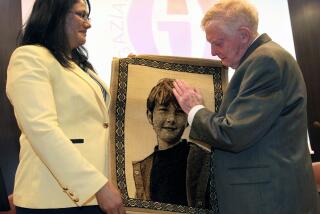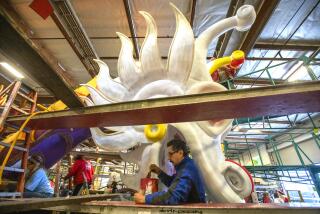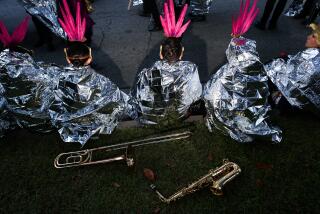A Rose Parade float marks gift of life
On Dec. 24, 2007, 20-year-old Cora Brittany Hill of Orlando, Fla., received the ultimate Christmas gift: a new pair of lungs. At the time, cystic fibrosis was killing her. Her lungs had been so nearly destroyed by the disease that every breath had to be forced in and out. New, healthy lungs were her only hope, and she got them, thanks to the benevolence and foresight of the family of a stranger who had just died.
But transplants, though they have an impressively high rate of success, are not infallible. In time the new lungs failed and Cora, in chronic pain and too weak for another transplant, could be sustained only on a ventilator.
Calmly, but definitively, she told her family in December 2009 that she wanted to be taken off life support and donate her kidneys, in time for Christmas, to whoever on the waiting list needed them most. And that is what happened. Just as she had received a gift of life two years earlier, on Christmas Eve last year, Cora gave one herself. As her mother, Dee, sublimely put it: “Two families knew the joy of new life on the night that miracles happen.”
Cora is one of 60 organ donors whose floral portraits will be carried on the Donate Life float in the Rose Parade on New Year’s Day. Their stories are both tragic and inspiring, because that is the story of transplantation: One life is lost, but another — often several others — are suddenly revitalized.
The float will carry floral portraits of two babies, Joseph Quiambao of Albuquerque and Jacob Campbell of Horseheads, N.Y. Both boys died when they were just weeks old. Imagine the courage and generosity of their parents in making an instant decision to allow the infants’ organs to go to others. The portraits of two police officers, David Curtis and Jeff Kocab, will ride side by side. Partners on the Tampa police force, the men were shot during a routine traffic stop. Ben Kopp’s floral portrait will also be on the float. A 21-year-old soldier from Rosemount, Minn., Kopp died in a firefight with the Taliban in Afghanistan, but his heart, liver and kidneys are keeping other people alive.
In addition to the portraits, 30 people whose lives have been transformed by organ donation will ride on, or walk alongside, the float. One of them is 62-year-old Phil Van Stavern, who at one time was so sick that it looked as if he might have to spend the rest of his life in a wheelchair.
“There were many days when I didn’t think I would be able to get up and go to work,” he says, “but I didn’t want my sons to see me give up, and I didn’t want to scare them.” He was saved by his older brother, Neil, who donated one of his kidneys to him. Twenty-two years later, both men have busy and fulfilling careers, Neil as a veterinarian and Phil, appropriately, as interim chief operating officer of Life Share Oklahoma.
Then there is Ann Lopez, who donated a kidney five years ago to her husband, television personality George Lopez, and, although they are divorcing, she says, “I feel blessed to have been able to give him the gift of life.”
As you watch the parade, spare a thought for the 100,000 terminally ill people on the transplant waiting list. Every day, 17 of them die because of an acute shortage of donated organs. This can be cured only by newly bereaved families putting their grief aside to help someone who still has a chance.
The most effective thing you can do to help is to have a conversation with your family while death is still far away. Then, if you decide in favor of donating organs when you die, go to https://www.donatelife.net and register as an organ and tissue donor.
I have met hundreds of donor families over the years and can scarcely remember one who regretted it. Time and again they emphasize the same point: “It was the one good thing that came out of a terrible time.” It is those who said no who are often remorseful; they feel they have missed an opportunity to change the world for the better that they may never have again.
Reg Green (www.nicholasgreen.org) is the author of “The Nicholas Effect,” a book detailing the story of his son, Nicholas, 7, who was shot during an attempted robbery while the family was on vacation in Italy. Nicholas’ organs were donated to seven Italians.


